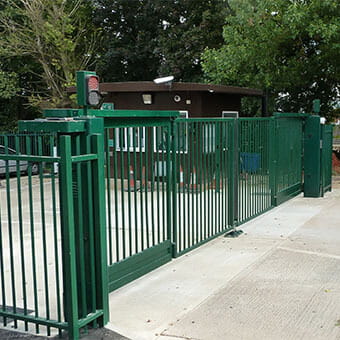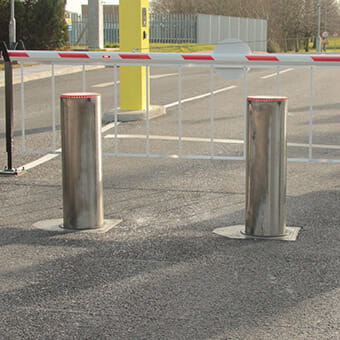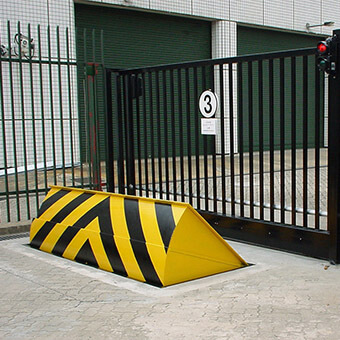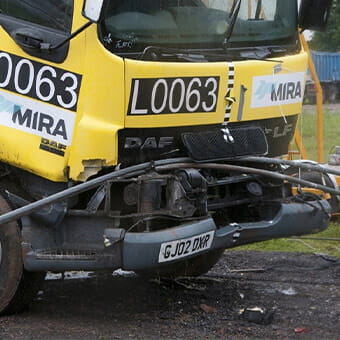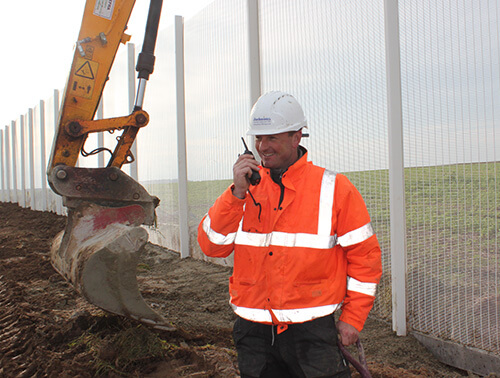Our other sites:
For effective, secure and up-to-date perimeter security, it’s crucial to consider the ever-changing threat landscape. The rise of vehicle-borne attacks has made Hostile Vehicle Mitigation (HVM) measures an increasingly important part of physical security strategies.
Assessing the threat, designing a strategy
Vehicle-borne attacks can range from direct assaults, such as ramming, to a blast from a parked car using Vehicle-Borne Improvised Explosive Devices (VBIEDs). Such attacks have historically targeted busy pedestrian thoroughfares or open spaces for maximum impact.
A comprehensive HVM solution incorporates access control, to prevent unauthorised vehicles reaching their intended target area, and barriers, to impede or delay a hostile vehicle’s progress, whilst also allowing for flowing pedestrian movement and considering the aesthetic impact of barriers in the streetscape.
When establishing a robust HVM strategy for your site, there are several options to consider:
To strengthen and modify perimeter security for your site based on your needs and the potential threats present, bollards, barriers, road blockers, access control and security fencing are among the most effective ways to impede an attack and limit the damage it may cause.
Hostile Vehicle Mitigation products
Vehicle Security Barriers (VSB)
There are two types of VSB: active VSBs, which include retractable bollards and road blockers, and rising, folding, sliding or swinging gates, and passive VSBs, such as fixed bollards, planter units, structural walls or enhanced fences, strengthened street furniture and earthworks, e.g. steps or ditches.
Vehicle Access Control (VSB)
Vehicle Access Control Points (VACPs) allow you to monitor and restrict vehicle access both to and from a site or public space and are typically designed in tandem with perimeter security and/or static VSBs to prevent circumvention.
As VACPs are often unmanned, it’s essential to consider routes for vulnerable road users, activation methods and unauthorised vehicle rejection as well as basic signs, instructions, signals and maintenance.
BSI PAS 68
When specifying vehicle security barriers, it’s essential to understand the different capabilities of security products in order to incorporate the appropriate level of strength and resistance into your perimeter security strategy.
The British Standards Institution’s (BSI) PAS 68 rating is a widely renown standard for HVM products, offering a strength classification based on product performance when subjected to a single horizontal impact.
At Jacksons we offer a range of PAS 68 barriers, fencing and bollards, designed with the sole intention of preventing or minimising the damage inflicted by vehicle-borne attacks and capable of halting a HGV whilst remaining unobtrusive.
IWA-14
Originally published in 2013, the IWA 14 standard draws on elements from the other two major impact test standards, PAS 68 and ASTM. IWA 14 was designed to be considered the ‘world’s impact test standard’ with input from the Centre for Protection of National Infrastructure, British Standards Institute, the US Department of State, and others.
IWA stands for ‘International Workshop Agreement’ and is overseen by the International Organization for Standardization (ISO). Similar to PAS 68, the IWA 14 rating starts with the type of test that was conducted, which, in this case, was a vehicle test. This means that an actual vehicle was crashed into the bollard to certify the product.
IWA 14-1 differs from PAS 68 in that vehicle tests are the only method used, while PAS 68 also allows for simulated and pendulum tests.
As an example, the classification for our road blocker is IWA 14-1:2013 V/7200[N2A]/80/90:06
The method of testing - V (vehicle), type of vehicle with the category in brackets, the weight of the vehicle -7200kg, the impact speed - 80km/h, the angle of attack - 90 degrees, the penetration - 0.6m.
The IWA 14 rating does not include debris dispersion, while PAS 68 does.
We also offer thorough site assessments, giving full consideration to the needs of any site, from stadiums and public spaces to utility sites and shopping centres, to ensure a comprehensive security solution. For more information about our PAS 68 and IWA-14 solutions, click here.
Related products
Jacksons Security has a range of products relating to this article, all complete with our 25 year service life guarantee. If you cannot find the item you are looking for, please do not hesitate to call our friendly sales team.
Related Content
Top
